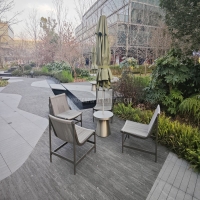Welcome to the website for landscape facilities products and knowledge.
How do landscape tables align with active design strategies for promoting physical activity?
Landscape tables, often found in parks, plazas, and urban green spaces, play a subtle yet impactful role in active design strategies aimed at promoting physical activity. These multifunctional structures blend seamlessly into public environments while encouraging movement, social interaction, and outdoor engagement—key pillars of active design.
Active design is an architectural and urban planning approach that prioritizes physical health by creating spaces that naturally inspire movement. Landscape tables contribute to this by offering flexible seating arrangements that invite people to gather, eat, or work outdoors, often in settings that encourage walking, stretching, or even light exercise. Their placement along walking paths or near fitness stations further reinforces their role in fostering an active lifestyle.
Moreover, landscape tables often incorporate ergonomic features, such as adjustable heights or integrated standing options, which subtly promote posture variation and mobility. By combining functionality with aesthetic appeal, they transform static urban areas into dynamic hubs of activity.
In summary, landscape tables are more than just furniture—they are strategic tools in active design, helping cities cultivate healthier, more active communities through thoughtful urban planning.
Related search:

Recommendation
Metal structure rattan chair without armrests for single person, with woven seat and backrest.